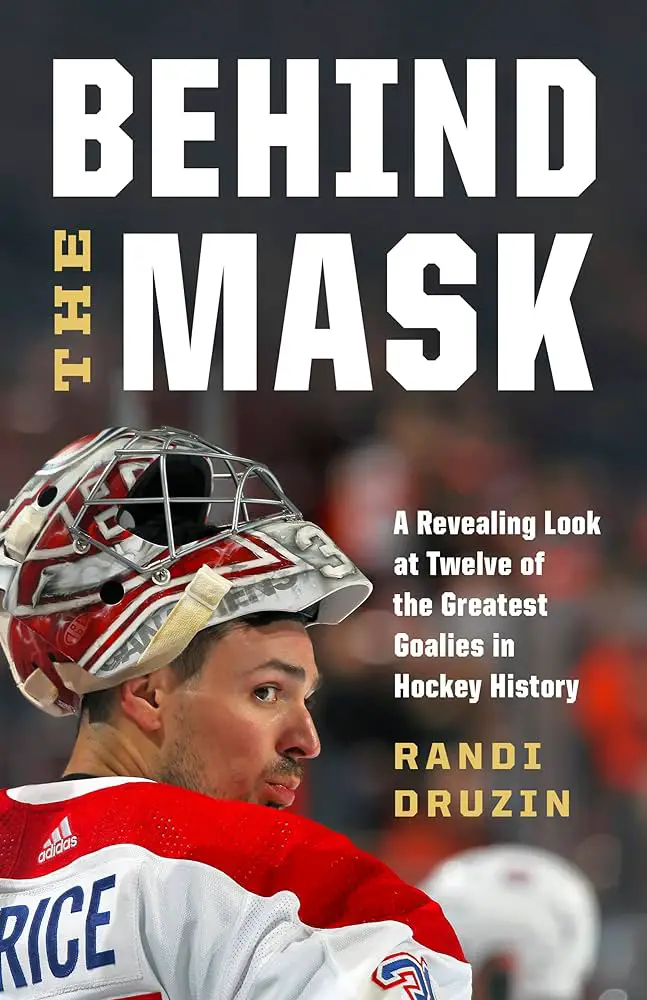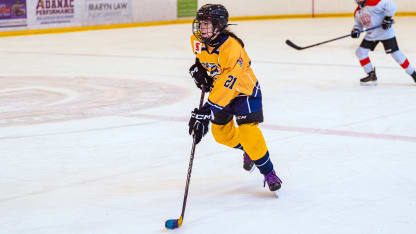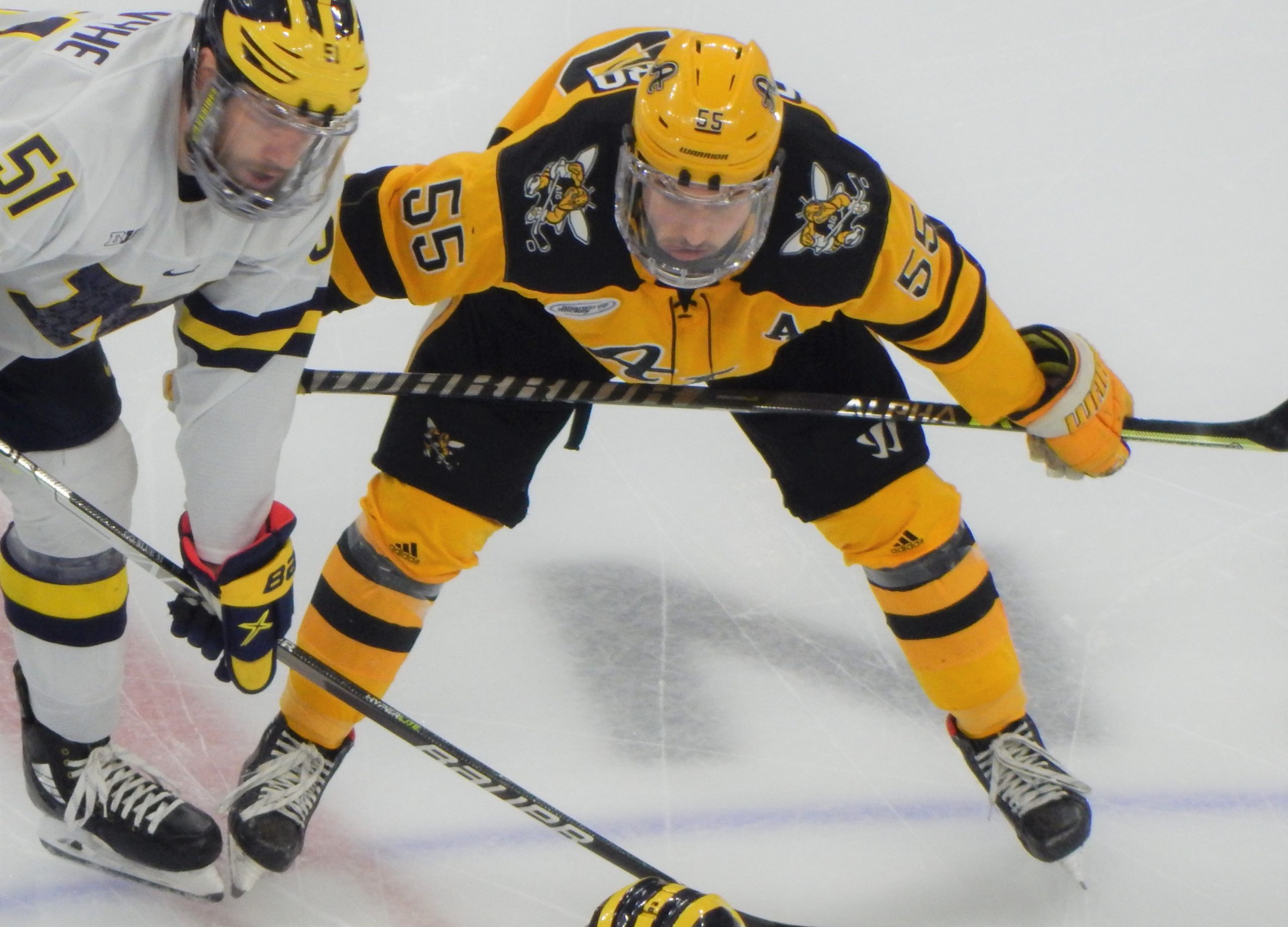Ice hockey and field hockey differ based on the playing surface, with ice hockey played on ice and field hockey played on grass or artificial turf. Ice hockey and field hockey are two distinct sports with differences in several key aspects.
While both involve hockey sticks and goals, they are played on different surfaces. Ice hockey, as the name suggests, is played on ice, usually within an enclosed rink. Players wear skates and maneuver on the ice to shoot a puck into the opponents’ net.
In contrast, field hockey is played on grass or artificial turf. Players use field hockey sticks to maneuver a ball into the opponents’ goal. These surface distinctions significantly impact the gameplay, strategies, and rules of the two sports. Additionally, there are variations in equipment, player skills, and game dynamics. Understanding these differences is crucial to appreciate the uniqueness and nuances of each sport.
Table of Contents
- 1 History Of Hockey
- 2 Equipment
- 3 Playing Surface
- 4 Gameplay
- 5 Physical Demands
- 6 Popularity And Global Reach
- 7 Professional Leagues
- 8 Notable Players
- 9 Cultural Significance
- 10 Gender Dynamics
- 11 Impact On Youth Development
- 12 Frequently Asked Questions Of What Is The Difference Between Ice Hockey And Field Hockey
- 12.1 What Are The Main Differences Between Ice Hockey And Field Hockey?
- 12.2 How Does The Playing Field Differ In Ice Hockey And Field Hockey?
- 12.3 What Are The Key Variations In Rules Between Ice Hockey And Field Hockey?
- 12.4 What Are The Primary Equipment Disparities Between Ice Hockey And Field Hockey?
- 12.5 How Do The Playing Styles Differ Between Ice Hockey And Field Hockey?
- 12.6 What Are The Historical Origins Of Ice Hockey And Field Hockey?
- 12.7 What Are The Respective Popularity And Global Reach Of Ice Hockey And Field Hockey?
- 13 Conclusion
History Of Hockey
History of HockeyOrigins of ice hockeyHockey has a remarkable past, with ice hockey originating in cold regions where frozen water provided a perfect playground. Originally, played outdoors in Canada, ice hockey quickly gained popularity and evolved into the fast-paced sport we know today.
Origins of field hockeyField hockey, on the other hand, traces its roots back to ancient civilizations like Egypt and Greece, where it was played as an early form of the sport. Over time, field hockey spread across the globe and underwent various adaptations to suit different terrains and cultures.

Credit: www.amazon.com
Equipment
The equipment used in ice hockey and field hockey differs significantly, due to the contrasting nature of the two sports. Whether it’s the playing surface or the type of gear required, understanding the distinctions is essential for anyone interested in these fast-paced, exciting games.
Ice Hockey Gear
Ice hockey, as its name suggests, is played on ice. Players glide across the frozen rink, requiring specialized gear to ensure their safety and maximize their performance. The following equipment is crucial:
- Hockey Skates: These boots have sharp metal blades attached to the bottom, allowing players to skate smoothly on the ice.
- Hockey Stick: Made of composite or wooden materials, the stick is used to control the puck and shoot it towards the opponent’s net.
- Helmet: Protecting the head from potential injuries, the helmet is a vital piece of ice hockey gear. It usually includes a face cage or shield for facial protection.
- Shoulder Pads: These protective pads shield the upper body, including the shoulders, chest, and back, guarding against impact during collisions.
- Elbow Pads: Elbow pads prevent injuries when players fall or collide with others, ensuring the elbows are well-padded and protected.
- Gloves: Designed to allow players to firmly grip their stick while shielding their hands, hockey gloves provide both comfort and protection.
- Padded Shorts: Worn under the uniform, padded shorts help cushion the hips, thighs, and tailbone, reducing the risk of injuries from falls or impacts.
- Shin Guards: Protecting the lower legs and knees from slashes and impacts, shin guards are an indispensable part of an ice hockey player’s gear.
- Goalie Gear: Goalkeepers require additional specialized gear. This includes leg pads, a chest protector, padded gloves, a helmet with a face mask, and a goaltender stick.
Field Hockey Gear
Field hockey, on the other hand, is played on grass or artificial turf. The equipment needed for this sport is distinct from ice hockey, providing players with the necessary protection and control on a different playing surface. Here is the essential field hockey gear:
- Field Hockey Stick: This stick is significantly different from an ice hockey stick, as it has a more flexible shaft and a flat playing surface on one end to hit the ball.
- Mouthguard: Field hockey players wear a fitted mouthguard to protect their teeth and jaws during games, reducing the risk of dental injuries.
- Shin Guards: Similar to those used in ice hockey, field hockey shin guards help protect the lower legs from impacts and stick checks.
- Gloves: Field hockey gloves provide some padding on the hand, particularly for penalty corner defenders and goalkeepers.
- Goalie Gear: Goalkeepers require additional specialized gear, including a helmet with face protection, padded kickers, leg guards, padded gloves, and a padded chest protector.
- Field Shoes: Designed with specialized soles for better traction on grass or artificial turf, field hockey shoes offer players stability and grip while running.
- Protective Eyewear: Certain leagues or organizations may require players to wear protective eyewear to minimize the risk of eye injuries from high-speed balls and sticks.
Playing Surface
Playing Surface:
Ice Hockey Rink
An ice hockey rink is a rectangular surface with smooth ice for players to skate on.
Dimensions:
| Length | Width |
|---|---|
| 200 feet | 85 feet |
Features:
- Boards: Surround the rink to keep the puck in play.
- Goals: Located at each end for scoring.
- Crease: Area in front of the goal where only the goalie can play.
Field Hockey Field
A field hockey field is a grass or turf surface where players use sticks to hit the ball.
Dimensions:
| Length | Width |
|---|---|
| 100 yards | 60 yards |
Features:
- D: Shaped goals at each end for scoring.
- Circle: Area around the goal used for penalty corners.
Gameplay
In ice hockey, the gameplay is characterized by its fast-paced and physical nature, while field hockey is known for its strategic and technical gameplay. Both sports involve the use of a stick and a ball, but the rules and style of play vary significantly.
Rules Of Ice Hockey
Ice hockey is played on a rink, with teams of six players (including a goalkeeper) aiming to score goals by shooting the puck into the opposing team’s net. The game is divided into three 20-minute periods, and players move the puck using their sticks. Body checking is a key aspect of the game, allowing players to legally hit opponents to gain possession of the puck. Offside and icing are important rules to prevent strategic advantage.
Rules Of Field Hockey
Field hockey is played on a grass or turf field, with teams of 11 players (including a goalkeeper) aiming to score goals by hitting the ball into the opposing team’s net. The game is divided into two 35-minute halves. Unlike ice hockey, physical contact is less prevalent, and players predominantly use their stick to maneuver the ball. Additionally, players are not allowed to use the rounded side of the stick to play the ball, and lifting the stick above the shoulder is prohibited.
Physical Demands
When it comes to the physical demands, there are key differences between ice hockey and field hockey. In this section, we will discuss the comparison of physicality and the key differences in player roles between these two popular sports.
Comparison Of Physicality
Ice hockey is known for its fast-paced and aggressive nature. Players skate on a frozen surface and engage in intense physical contact, including body checks and collisions with the boards. The use of a hard rubber puck adds to the physicality of the game, as players battle for possession and create scoring opportunities. In ice hockey, physical strength and endurance are crucial, as players need to withstand the physical challenges while maintaining their speed and agility on the ice.
On the other hand, field hockey is played on natural grass or artificial turf. While physical contact is not as prominent as in ice hockey, field hockey still demands a high level of athleticism. Players engage in running, dodging, and stick-to-stick challenges to gain control of the ball. The focus is on maneuvering the ball through quick passes and skillful dribbling. Field hockey requires agility, speed, and hand-eye coordination to excel and overcome opponents.
Key Differences In Player Roles
In ice hockey, the player roles are diverse and specialized. The team consists of forwards, defensemen, and a goaltender. Forwards are responsible for scoring goals, using their speed and shooting skills to outsmart the opponents. Defensemen focus on preventing goals by using their physical presence and defensive techniques to hinder the opposing team’s progression. The goaltender plays a crucial role in protecting the net and stopping shots from the opponents, requiring excellent reflexes and quick decision-making.
Meanwhile, in field hockey, the player positions are less specialized. The team typically comprises forwards, midfielders, defenders, and a goalkeeper. Forwards aim to score goals, showcasing their attacking skills and positioning themselves strategically to receive passes near the opponent’s goal. Midfielders play both defensive and offensive roles, providing support to the forwards and transitioning the ball between defense and attack. Defenders focus on protecting the goal and intercepting passes from the opposing team, aiming to prevent scoring opportunities. The goalkeeper’s primary task is to save shots on goal, using reflexes and agility to keep the opposing team from scoring.
Popularity And Global Reach
The popularity and global reach of both Ice Hockey and Field Hockey play a crucial role in shaping the sports landscape worldwide. Let’s delve deeper into how the fanbase and popularity differ between the two sports.
Ice Hockey’s Worldwide Fanbase
Ice hockey boasts an expansive worldwide fanbase, with a strong following in North America, Europe, and parts of Asia. The sport’s fast-paced nature and physicality appeal to fans across the globe.
Field Hockey’s Popularity In Different Regions
Field hockey has a diverse popularity spread, with strongholds in countries like India, the Netherlands, Australia, and Argentina. These regions have a rich tradition and strong support for the sport.
Professional Leagues
Major Ice Hockey Leagues
Ice hockey boasts several major professional leagues worldwide, each showcasing top-tier talent.
- National Hockey League (NHL) – Premier professional ice hockey league in North America.
- Kontinental Hockey League (KHL) – Most prominent ice hockey league in Russia and Eastern Europe.
- Swedish Hockey League (SHL) – Sweden’s top professional ice hockey league.
Prominent Field Hockey Competitions
Field hockey also features renowned global competitions that attract top players from around the world.
- FIH Hockey Pro League – Premier international field hockey competition organized by the International Hockey Federation.
- Hockey India League (HIL) – India’s professional field hockey league.
Notable Players
Ice hockey and field hockey have produced some incredible athletes who have taken the game to new heights. Let’s take a look at the iconic players from each sport.
Iconic Ice Hockey Athletes
Ice hockey has given us a plethora of legendary players who have left an indelible mark on the sport. Here are just a few of the most iconic ice hockey athletes:
- Wayne Gretzky: Known as “The Great One,” Gretzky is considered the greatest ice hockey player of all time. With his exceptional skill, vision, and scoring ability, he dominated the game throughout his career.
- Mario Lemieux: Another legendary player, Lemieux was known for his incredible scoring ability and exceptional stickhandling skills. He overcame multiple health issues to achieve great success on the ice.
- Bobby Orr: Orr revolutionized the game as a defenseman with his offensive prowess. He was known for his speed, agility, and ability to generate scoring opportunities.
Famous Field Hockey Players
Field hockey has also produced some remarkable players who have taken the sport to new heights. Let’s explore a few of the most famous field hockey players:
- Alyson Annan: An Australian field hockey player, Annan is widely regarded as one of the greatest female players in the history of the sport. She possessed incredible skill, speed, and goal-scoring ability.
- Jamie Dwyer: Dwyer is an Australian field hockey player who is considered one of the best of his generation. He had exceptional stick skills, agility, and was a prolific goal scorer.
- Taeke Taekema: A Dutch field hockey player, Taekema was known for his powerful drag flicks and exceptional penalty-corner skills. He was a key player in the Dutch national team’s success.
Cultural Significance
The Cultural Significance of ice hockey and field hockey is deeply rooted in the history and traditions of various cultures around the world. Each form of hockey holds unique significance and has become an integral part of the social and cultural fabric of different communities.
Role Of Hockey In Different Cultures
Ice hockey and field hockey play a significant role in shaping the identity and lifestyle of many cultures. In countries like Canada, ice hockey is more than just a sport; it’s a symbol of national pride and a unifying force for communities. Similarly, in countries such as India and the Netherlands, field hockey holds immense cultural importance and is often associated with national identity and heritage.
Traditions And Rituals Associated With Hockey
Both ice hockey and field hockey are intertwined with rich traditions and rituals that have been passed down through generations. For example, the indigenous communities of Canada have long-standing traditions associated with ice hockey, incorporating spiritual elements and ceremonial practices into the sport. In field hockey, tournaments and matches are often accompanied by traditional dance performances and music, adding a cultural dimension to the sport.

Credit: www.nhl.com
Gender Dynamics
Gender dynamics play a significant role in the landscape of both ice hockey and field hockey. Let’s explore how these dynamics shape the participation rates among genders and the challenges and advancements in gender equality in both sports.
Participation Rates Among Genders
In ice hockey, the sport has historically been male-dominated, with majority of participants being male. However, the past few decades have seen a significant increase in female participation, with more women and girls taking up the sport at both amateur and professional levels.
On the other hand, field hockey has traditionally had more balanced participation rates among genders. Both men and women actively participate in field hockey, with numerous countries having strong national teams for both genders. This balanced participation has contributed to a more gender-inclusive culture within the sport.
Challenges And Advancements In Gender Equality
Ice hockey has faced challenges in promoting gender equality, particularly in terms of pay equity and representation in leadership roles. Despite these challenges, there have been notable advancements, such as the establishment of professional women’s leagues and initiatives to advocate for equal opportunities for women in ice hockey.
Field hockey has made strides towards gender equality, but challenges remain, including disparities in funding and media coverage between men’s and women’s competitions. Advancements in this area include the implementation of policies to ensure equitable opportunities for both male and female players, as well as initiatives to address gender-based discrimination and stereotypes within the sport.
Impact On Youth Development
Ice hockey and field hockey may seem similar, but they have distinct differences. Ice hockey is played on ice with players wearing skates, while field hockey is played on grass or artificial turf with players using sticks. These variations in equipment and playing surface create unique challenges for the players, making each sport a unique experience.
Playing hockey can have a significant impact on the development of children, both physically and mentally. It can help them build resilience, teamwork skills, discipline, and physical fitness. Additionally, it fosters a sense of camaraderie while instilling leadership qualities. In this section, we will explore the numerous benefits of playing hockey for children and the skills that they can cultivate through their involvement in the sport.Benefits Of Playing Hockey For Children
Playing hockey offers a multitude of benefits for children’s overall development: 1. Physical fitness: Hockey is an intense sport that requires agility, speed, and endurance. By participating in regular hockey training and games, children can enhance their cardiovascular fitness, build muscular strength, and improve their coordination. 2. Teamwork and collaboration: Hockey is a team sport, and success on the ice relies on effective teamwork. Through playing hockey, children learn to work together, communicate, and support one another towards a common goal. These valuable life skills extend beyond the rink and can benefit them in various areas of their lives. 3. Discipline and time management: Hockey requires commitment and dedication, as players must adhere to practice schedules, maintain personal fitness, and manage their time effectively. This helps children develop discipline, punctuality, and a strong work ethic that can positively impact their academic and personal endeavors. 4. Resilience and perseverance: Hockey presents its fair share of challenges, both physically and mentally. From mastering complex skills to facing tough opponents, children learn to overcome setbacks, push their limits, and develop resilience, which can greatly benefit them in other areas of their lives.Skills Cultivated Through Hockey
Playing hockey cultivates a range of skills that are valuable for children’s personal growth:| Skills | Description |
|---|---|
| Hand-eye coordination | Hockey requires precise coordination between hand movements and visual perception, improving hand-eye coordination overall. |
| Motor skills | Dribbling, shooting, passing, and skating enhance children’s motor skills, promoting balance, agility, and fine motor control. |
| Tactical thinking | Hockey involves making quick decisions under pressure, boosting children’s problem-solving abilities and strategic thinking skills. |
| Communication | Effective on-ice communication is vital in hockey. Children learn to communicate concisely and assertively with teammates, fostering strong communication skills. |
| Concentration and focus | Hockey requires players to maintain constant focus, improving children’s concentration skills both on and off the ice. |
| Leadership | Hockey provides opportunities for children to take on leadership roles, boosting their confidence, decision-making abilities, and leadership qualities. |

Credit: www.uscho.com
Frequently Asked Questions Of What Is The Difference Between Ice Hockey And Field Hockey
What Are The Main Differences Between Ice Hockey And Field Hockey?
Ice hockey is played on ice with a puck, while field hockey is played on grass with a ball. The equipment, rules, and playing surface differ.
How Does The Playing Field Differ In Ice Hockey And Field Hockey?
In ice hockey, the playing surface is an ice rink, while in field hockey, it’s a grass field. The dimensions also vary, affecting gameplay.
What Are The Key Variations In Rules Between Ice Hockey And Field Hockey?
Ice hockey allows body contact and checking, while field hockey prohibits these. Additionally, the methods of scoring and player positions differ.
What Are The Primary Equipment Disparities Between Ice Hockey And Field Hockey?
Ice hockey players wear ice skates, protective gear, and use a stick with a flat blade. Field hockey players use hooked sticks, shin guards, and specialized footwear.
How Do The Playing Styles Differ Between Ice Hockey And Field Hockey?
Ice hockey’s fast-paced, physical play contrasts with field hockey’s emphasis on technique and finesse. The strategy and positions also differ in each sport.
What Are The Historical Origins Of Ice Hockey And Field Hockey?
Ice hockey’s roots date back to northern Europe, while field hockey has ancient origins in Egypt, Persia, and Greece. Both have rich historical and cultural significance.
What Are The Respective Popularity And Global Reach Of Ice Hockey And Field Hockey?
Ice hockey is prominent in North America and Northern Europe, whereas field hockey enjoys popularity in countries like India, the Netherlands, and Australia. Both have dedicated fan bases worldwide.
Conclusion
Ice hockey and field hockey may share some similarities in terms of equipment and objective, but they are fundamentally different sports. Ice hockey is known for its fast pace, physicality, and played on ice, while field hockey is played on grass or turf and emphasizes skill, agility, and strategic maneuvering.
Understanding these distinctions is key to fully appreciating the unique qualities of each sport. Whether you’re a fan or a player, both ice hockey and field hockey offer thrilling experiences for sports enthusiasts around the world.
